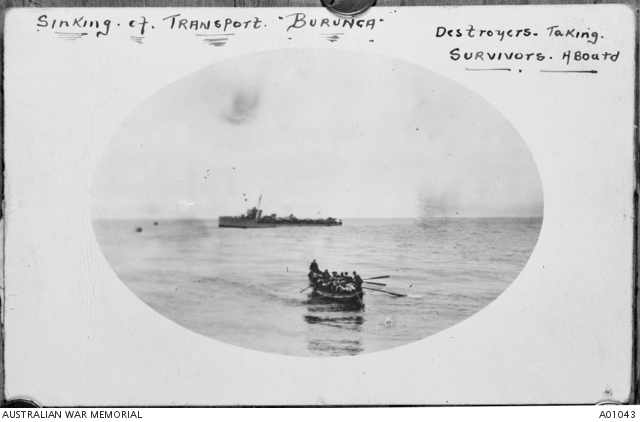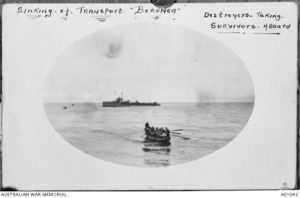Mary Ann Woods was no stranger to grief. She lost three children in their infancy, was widowed in 1910, and, in April 1918, lost two sons on the Western Front. Her oldest son, William Alexander, and her youngest, Sidney Charles, died within nine days of each other. Mary’s sister died the following week. In a cruel twist of fate both William and Sidney’s personal effects were lost at sea when the SS Barunga – was torpedoed and sank off the coast of Cornwall in July 1918.
William Alexander Woods was born in Forest Reefs in 1875, Mary’s third child and first son, named after his father, William snr.
In February 1916 William, at 41 years of age, enlisted at Broadmeadows and was assigned to the 36th Battalion, C Company, as a private. He embarked HMAT A72 Beltana in Sydney on 13 May 1916, arriving at Plymouth on 9 July.
In September 1916 William proceeded to France, and on 6 October was assigned to the 54th Battalion. On 25 June 1917 he was detached for duty to the 14th Australian Light Trench Mortar Battery for six weeks.
William spent two weeks leave in the United Kingdom in October 1917, rejoining his battalion on 7 November.
In early April 1918 the 54th Battalion was stationed near Villers-Bretonneux. On Saturday 6 April the battalion received orders to proceed to a reserve area in preparation to provide support for the front line. The following day their encampment was subject to intermittent enemy fire. William was injured, receiving multiple gunshot wounds to the legs. He was transferred to the 5th Casualty Clearing Station, where he later died from his wounds.
The Matron on duty at the 5th Casualty Clearing Station noted:
891 Pte WA Woods 54th Battn AIF was admitted here 8-4-18 and died the same day. He had seven multiple wounds. He was unconscious so did not suffer. He had every care and attention
William was buried at Picquigny British Cemetery. In November 1918 WM Kennedy, a volunteer with the Red Cross Wounded and Missing Bureau, visited William’s final resting place:
I visited the Military Cemetery today. It is situated on the brow of a hill overlooking Picquigny and only a few hundred yards from the village. A magnificent panoramic view of the surrounding country is obtained from the site. Looking eastward over the Somme, one can see several small towers each with its tall church spire from which the chime of bells at morn and eve resounds… Each grave is marked with a cross, and every one bore a wreath of fresh cut flowers, regularly placed there by the residents of the village as a grateful tribute to their fallen deliverers.
In July 1918 the SS Barunga left Plymouth, transporting 800 sick and wounded Australian soldiers bound for home. The vessel was also transporting William and Sidney’s personal effects for delivery to their next of kin – their mother, Mary Ann. On 15 July the Barunga was hit by a torpedo from a German submarine 150 miles south west of the Scilly Isles. Nearby destroyers rushed to the rescue and managed to save all those aboard. The Barunga sank and William’s and Sidney’s personal effects were lost.
William Alexander Woods is commemorated on the Holy Trinity Church Orange Honour Roll, the World War I Roll of Honour on the southern face of the Orange Cenotaph and on panel number 160 on the Roll of Honour at the Australian War Memorial in Canberra.
In 1923 the Anzac Memorial Avenue of trees was planted along Bathurst Road to commemorate fallen WWI soldiers. A tree was planted in honour of “Signaller WA Wood”, presumably William. It was donated by JG Black. Very few of the trees are still standing today.


